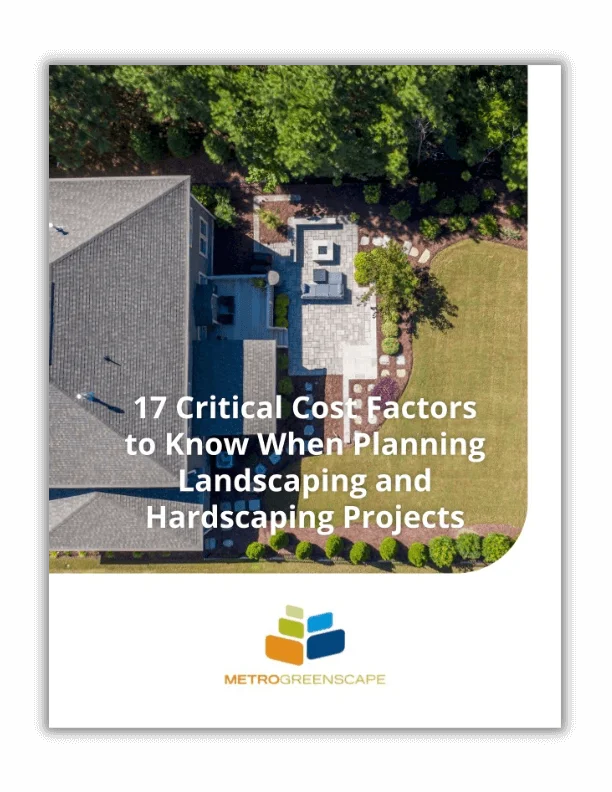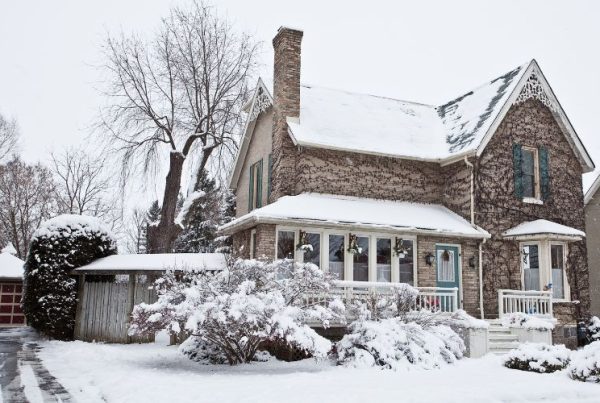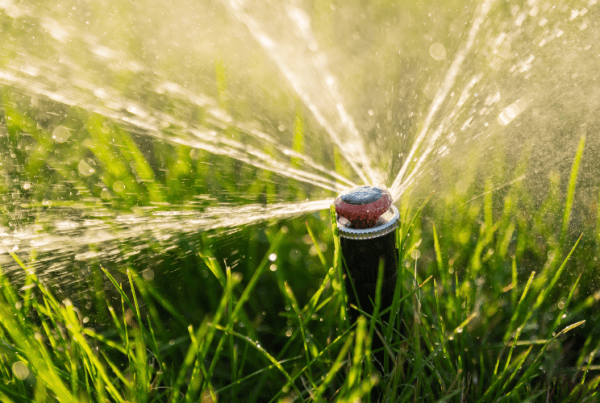Do you want to have a lawn you are proud of? One with vibrant, lush grass that leaves your neighbors wondering how you did it? We can help you achieve those dreams. Applying lime to lawn adjusts your soil’s pH, creating slightly acidic dirt that will make your lawn thrive.
Whether you want to learn how to apply lime yourself or know what it would look like for us to apply lime for you, read on! Fuller, richer, greener grass is in your future.
Get Lawn Care Info ›
Live in the Charlotte, NC area and need help with your landscaping project? Click “Get the Guide” to see our pricing guide today!
What Does Lime Do for Lawns?
Healthy grass requires a soil pH range from 5.8-7.0. The ideal spot within that range depends on which type of grass you grow. Warm-weather grasses need a slightly lower pH, while cool-weather grasses need a pH that’s slightly higher. Not sure which one you have? Contact us for a lawn consultation!
When soil pH is too low, the grass cannot take up the soil nutrients it needs. When this occurs, grass stops growing and significant lawn troubles begin. Adding lime to soil keeps the correct pH range for grasses to thrive. When the soil is at the optimal pH level, more nutrients from lawn fertilizer are available, allowing grass to grow fuller and thicker.
What Are Signs You Need to Lime Your Lawn?
A soil pH test is always required to determine if lime is right for your lawn, but here are some other indicators your yard needs help:
There are a lot of weeds – Many weeds prefer acidic soil, so when your soil’s pH is too low, an abundance of weeds will grow. Typically, healthy lawns are able to choke out most weeds on their own.
Fertilizing does not have an impact – If your lawn does not green up after fertilizing it, the soil pH might be too acidic. If the soil pH is too acidic, the grassroots will not take up nutrients, and the lawn becomes dull and then browns.
Too Many Lawn Pests – Healthy lawns keep pests in check. When too many lawn pests begin bugging you or the lawn, it could be because the lawn is not thriving.
Drought and Stress – During a drought, most grasses slow production so that only the most essential part of the grass receives nutrients. During the rainy season, when the lawn is recovering from drought, applying lime can help your grass regain its vibrance.
Lime Lawn Application
Applying lime to lawn correctly is essential to maintaining the safety of people who use the lawn — kids, adults, and pets — and for those who apply the lime to the lawn. To ensure the safest procedures are followed, use a professional landscaper to apply your lime.
How to apply lime:
Test your soil pH – In order to apply the correct amount of lime, you need to know your soil’s pH. A soil pH tester can be purchased from a local garden center, or you can test Charlotte soil by requesting a pH kit from Charlotte-Mecklenburg Storm Water Services, where you mail a sample of your soil to the county. The county will then provide you with a detailed soil report, which is much more precise and accurate than a store-bought pH kit.
Aerate your lawn – Aerating your lawn allows the lime to enter the soil, a step especially helpful in Charlotte’s clay soils. Because lime helps the grass roots work more efficiently, the lime must seep deep into the soil rather than land on the grass surface or thatch.
Apply the lime lawn treatment – Lime must be applied to dry lawn and mixed into the top 5 inches of soil, where the root zone for grasses is located. The best tools to use are either a drop or rotary spreader.
Never apply lime to the lawn by hand. Lye within the lime can burn you if it touches your skin. You also want to use protective equipment such as a respiratory mask to keep the dust out of your lungs. For the safest lime application, use a landscaping professional who has access to proper safety equipment.
Water the Lime In – Finally, you must immediately rinse any extra lime off the blades of grass so it doesn’t cause them to burn.
When Should I Lime My Lawn?
For the best results in Charlotte, soil should be tested in the spring and applied in the fall or winter so that it can take effect before the roots become active in the spring. If you add lime during the warmer months of the year, it can damage the lawn. In the fall and winter, the lime is able to break down and become a part of the soil. Keep in mind that if your lawn is already stressed or if it is dormant, adding lime will further damage your grass. Schedule a lawn consultation if you are unsure.
How Often Should I Lime My Lawn?
Follow these tips to successfully maintain your lawn after an initial lime treatment:
- Always start by checking your soil’s pH. Making your soil’s pH too high with lime application will cause your lawn to suffer.
- Generally, only apply 50 lbs of lime per 1,000 sqft of lawn or less during the initial application. If you need more than 50 lbs to fully treat the soil, then apply the lime in two applications. First in early spring, then the next fall or winter.
- Check your lawn’s soil pH every 1-2 years. Repeat lime treatment as needed (only when the pH is dropping.)
Can I Apply Lime and Fertilizer at the Same Time?
Technically you can apply fertilizer and lime at the same time. However, it is best to first fertilize the lawn and then use the lime later. Let the lawn’s water system go through several rotations and then work on applying lime to lawn. You can also fertilize and then wait for a good rain and lime the lawn after the rain.
If you choose to lime and fertilize simultaneously, be sure to use a granular lime product rather than a powder. Remember that if the soil pH is too acidic, the lawn will not be able to uptake fertilizer. Always let the soil pH test indicate your best course of action.
What Happens if You Use Too Much Lime on Your Lawn?
Lawn grass has a preferred range for soil pH. If you apply too much lime and the soil becomes alkaline, then the grasses will not be able to uplift nutrients, such as nitrogen, to the blades. Too much lime changes the soil pH and pushes it into an area where the grasses will not thrive. If you do not catch this mistake in time, the lawn will turn yellow, and the grasses can die.
Benefits of Working With MetroGreenscape for Lime Lawn Treatment
Lawn care can be tricky, especially when dealing with chemistry and chemical balances in the soil. Lime in particular can be dangerous and requires an abundance of knowledge in order for it to be effective.
There are different forms of lime, like time-release and fast-acting. We will audit your lawn and determine which to use based on your grass type. We also have all of the necessary tools on hand, know how to recognize the signs and symptoms of low soil pH, and how to apply the treatment safely and efficiently. With over 20 years of experience working with Charlotte landscapes, we are able to build the right lawn maintenance plan or lawn care plan for you. To get started, contact us today for a consultation.







